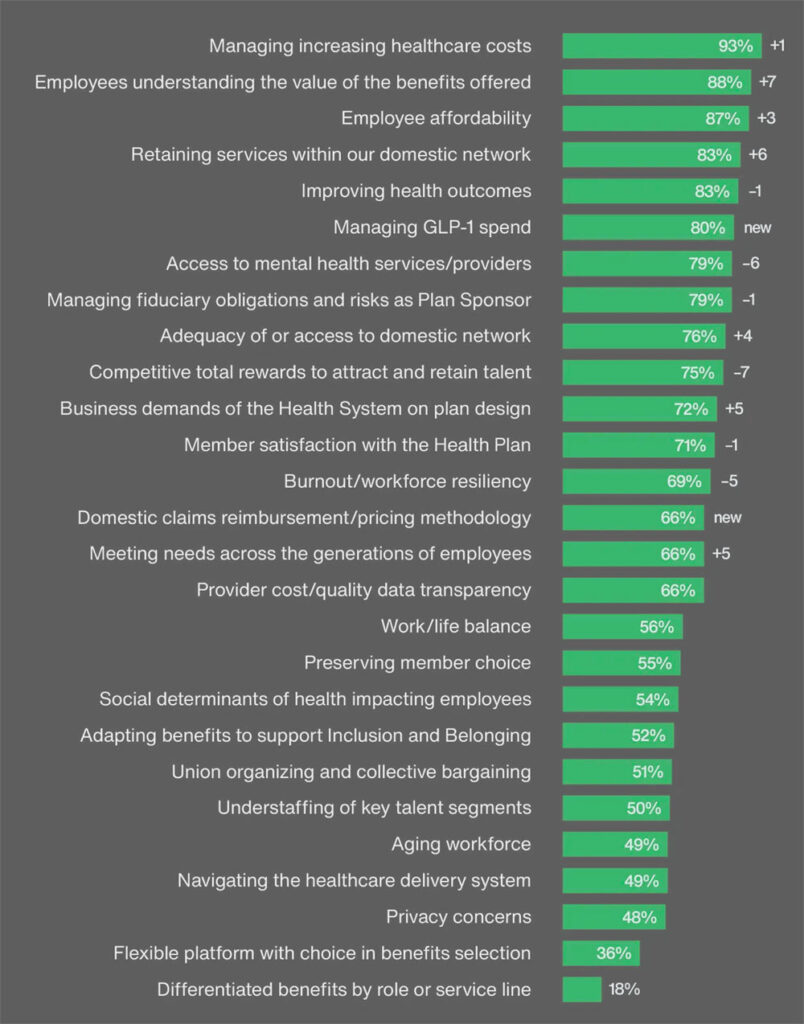Aon says rising healthcare costs now outrank talent retention as the top strategic issue for U.S. hospitals. That shift comes out of the firm’s Benefits Survey of Hospitals, covering 155 health systems and more than 1,500 hospitals representing 3.6mn employees.
The numbers track a sector pushed to the edge by inflation, chronic disease complexity, and pricey therapies that wreck budgets. Costs keep climbing, and hospitals sit in the middle of the storm.
93% of health systems put cost management at the top of their worry list. Median per employee per year spend rose 9.2% over the past year, which makes every CFO twitch.
Hospitals have started tweaking programs to get costs under control, but the bigger problem seems pretty familiar: employees often don’t grasp the value of the benefits they’re getting.
Only 14% of employers think staff understand their total rewards package, falling from 25 % a year earlier. That drop stings.
According to our analysts, when employees don’t see the value, cost optimization turns into noise.
Health and wellbeing continue to be a priority

Sheena Singh, who leads Aon’s national healthcare industry practice, said hospitals need to communicate more clearly about what benefits are worth.
She said organizations can’t just manage costs; they have to tell the story behind the benefits or they lose engagement. And honestly, you can feel the frustration in that point. Money goes out, impact stays blurry.
Hospitals are also leaning harder into affordability strategies: salary based contributions, company paid supplemental benefits, and financial support for lower wage workers.
At the same time, many systems are trying to build benefits that actually fit a multigenerational, diverse workforce. It’s messy, sure, but unavoidable.
Pharmacy cost management turned into a war zone. GLP 1 drugs for diabetes and weight loss now represent half of the top ten drugs by spend. Systems respond with exclusions, tighter clinical controls, and strict formularies.
Biosimilars are starting to cut costs for older medications, but it’s slow going. Some execs call this the most brutal part of the cost curve. Maybe they’re right.
Plan design keeps shifting too. Almost three quarters of health plans now run three tier setups including domestic, in network, and out of network options.
63% of systems offer high deductible health plans, even though enrollment stays lower than planners expected. As hiring widens geographically, about a third of systems offer separate plans for employees who work far outside the local service area.
Domestic steerage remains a central tactic because it feeds their own facilities, physicians, and pharmacies, creating tighter care integration and sharper cost control.
Wellbeing and ancillary benefits continue to expand. Family building support, paid parental leave, mental health access, and financial incentives tied to wellbeing programs all show up more often.
Half of respondents now offer a direct incentive for wellbeing engagement. People want these benefits, and employers know it.
Looking across two decades, Aon says hospital benefits changed almost beyond recognition. PEPY costs more than doubled. Self insurance became the norm.
High deductible plans, once considered wild for hospitals, now appear at nearly two thirds of systems.
Singh said the landscape transformed because hospitals had no choice but to adapt to rising costs, workforce needs, and shifting regulations. Maybe that’s obvious, but the speed of the shift still surprises people inside the industry.
We think the message behind this year’s findings is pretty blunt: cost pressure keeps grinding higher, and benefits evolve whether hospitals feel ready or not.
The systems that communicate well and design around actual employee needs stand a better chance of staying ahead. The rest scramble.









